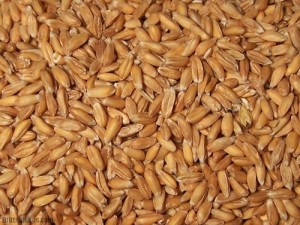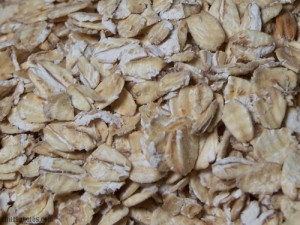 More people are beginning to experience the goodness of using whole grains. From the joy of smelling fresh baked breads in the kitchen, to the delicious taste of the end product, nothing quite compares to the goodness of whole grains. But the most important part for our family is the incredible nutritional value.
More people are beginning to experience the goodness of using whole grains. From the joy of smelling fresh baked breads in the kitchen, to the delicious taste of the end product, nothing quite compares to the goodness of whole grains. But the most important part for our family is the incredible nutritional value.
In order to get the most nutrition from whole grains there are a few very simply rules you should follow.
For Grain in the Hull:
- Keep in an air-tight container in a cool room below 80 degrees Fahrenheit.
- Keep free from humidity and be sure the container does not promote any condensation.
- Keep away from a direct heat source or direct sunlight.
For Freshly Milled Whole Grain Flour:
- Use immediately for peak nutrition
- Store any unused freshly milled flour for up 7 days at the next best optimum nutrition and up to 6 months before its spoiled.
- Fresh milled flour is susceptible to moisture in the air. Store immediately.
Whole Grain Flour – Store bought.
- This flour is already stripped of many oils and nutrients to give it a long shelf life.
- Store bagged flour in a dry place for up to one year.
- It is not and cannot become as nutritionally sound as freshly milled flour.
Once the grain is baked into a baked good, protect that goodness with a little more attention to storage. Whole grains tend to dry out faster than bleached or processed grains. You may want to store them in the refrigerator and you certainly will want to make sure they are stored in an airtight container or package.
Usually, in our home, once the grain is milled and then used, the items are not around long enough for them to spoil – we eat them too fast! To have the goodness of whole grains for a prolonged span of time, simply requires a little planning and protection.
 Oats are far more versatile than to simply be used for porridge or gruel. Whole Oats (usually Whole Rolled Oats) are a great source of protein, fiber, vitamins, and minerals. Whole oats have been proven to help reduce cholesterol levels and make a great healthy breakfast that will keep you contented all the way until lunch.
Oats are far more versatile than to simply be used for porridge or gruel. Whole Oats (usually Whole Rolled Oats) are a great source of protein, fiber, vitamins, and minerals. Whole oats have been proven to help reduce cholesterol levels and make a great healthy breakfast that will keep you contented all the way until lunch.
Oats are very seldom sold with the hull left on for eating. The whole oat grain is usually called “oat groats”, which is the least-processed form which can be used in the same ways you would use wheat kernels. Oat groats can be milled into flour or flaked into what we are used to as Old Fashioned Rolled Oats.
Steel Cut Oats are whole oat groats which have merely been roughly cut. Old-fashioned have been flattened and quick-cooking oats have been steamed a bit, cut and flattened to speed cooking process. Instant oatmeal has been rolled very thin and is already partially cooked. For nutrition (and some people would say for full texture), a thick rolled oat is the most full bodied option for a substantial oatmeal.
Because of their somewhat higher fat content, oats should be stored away from any heat or damp in an airtight container. The suggested storage time for oats is about three to six months.
In addition to porridge, oats can be used for stuffing, added to baked goods, or cooked whole and added to grain salads. Try using them in place of bread crumbs for meatloaf. Top a cobbler with a mixture of whole wheat flour, butter, sugar and whole oats. It’s also easy to make your own Granola!


